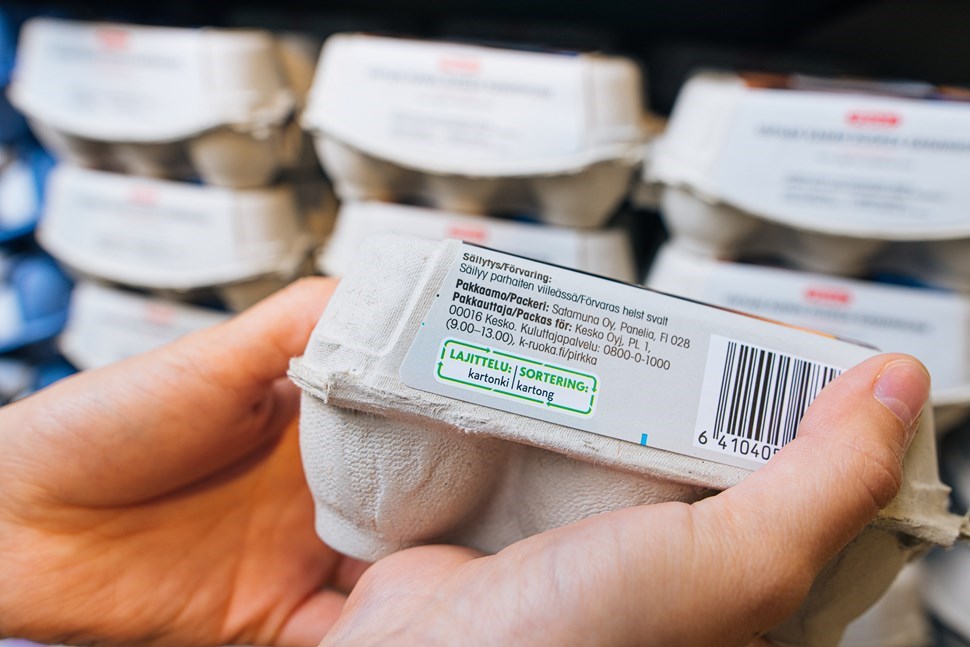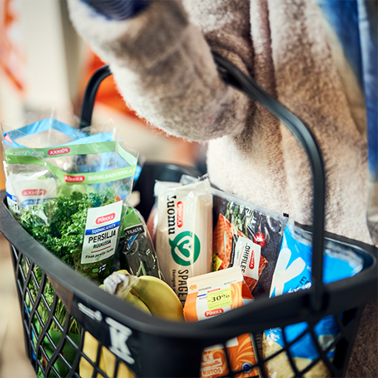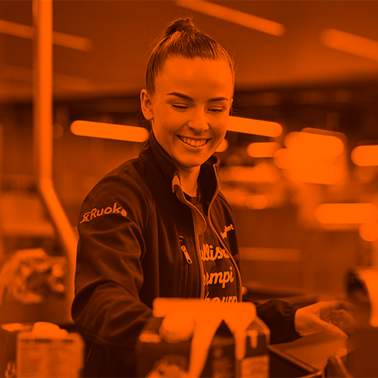Finland is lagging behind in its achievement of the EU’s targets to reduce the use of plastic carrier bags and for recycling plastic. New measures are needed and both businesses and customers must be involved. Customers are being encouraged to reduce...

Caps increasingly remain attached to beverage containers – changes due to regulations are visible in packaging and sorting

The new plastic caps of beverage containers that cannot be separated from the container may come as a surprise. The change is due to the EU’s Single-Use Plastics (SUP) Directive. The directive requires that a cap made of plastic must remain attached to certain beverage containers during its intended use.
K Group has made preparations for the impact of the directive, and the first modified products can already be found at stores. At the moment, caps that remain attached to the container can be found on individual products. The new caps will become more common next year, as the change to packages must be implemented by July 2024.
“Updating the packages of Pirkka products with the new type of caps has already started. Some products, such as the K-Menu sugar-free mixed soft drink, have already featured an attached cap for a long time. The new caps will be increasingly seen in stores,” says, Tuuli Luoma, Kesko’s Director responsible for private labels.
More and more households will fall in the scope of extended sorting
Many consumers still have trouble figuring out into which of the many garbage collection bins an empty container should be put. From the beginning of July onward, the amended Waste Act requires that residential buildings including at least five homes located in an urban area must have separate collections for packaging waste and small metal objects. Assistance for the diversification of sorting is provided with clear, written sorting instructions, which have already been added to hundreds of Pirkka, Pirkka Parhaat and K-Menu product packages.
“Many people find written sorting instructions to be more understandable than symbols. Because of this, hundreds of our product packages already include a box with a green or black frame explaining how the package and its parts should be sorted,” says Timo Jäske, Kesko’s Sustainability Director for groceries.
It is quick and easy to check the instructions to know whether the package belongs to carton, plastic, metal or glass bin. If the package consists of several different materials (e.g. a plastic can with an aluminium lid), the sorting of each material is indicated separately.
The recycling of plastic packaging in particular may be a new thing to some households affected by the change.
“Plastic used for product packaging can be placed in the plastic collection bin. Such plastic suitable for collection includes the plastic packaging of food products, detergents, toys and tools. Various package fillings made of plastic, such as expanded polystyrene, can also be sorted in the plastic collection bin. The packages must be empty, as dry as possible, and packages containing different kinds of plastic must not be placed inside one another. The packages can be flattened so that more waste fits in the waste bin,” says Maija Peltola, Customer Service Manager at Finnish Packaging Recycling RINKI Ltd.
If the building where you live is not covered by the sorting requirement, you can still sort your waste and bring it to a Rinki ecopoint, often located at K-food stores. The Rinki ecopoint network has recently been extended with 300 new collection points for plastic packaging.
Three questions and answers regarding the new caps
Maija Peltola from Finnish Packaging Recycling RINKI Ltd explains the reasons for the introduction of the new caps.
Why do the caps need to be changed?
“The EU’s Single-Use Plastics (SUP) Directive aims at reducing littering in the environment. One of the requirements of the directive is that the plastic cap of a plastic-containing beverage container must remain attached to the container throughout its intended use. Even though the new caps may feel strange at first, the requirement seeks to ensure that the cap ends up in the recycling bins with the container and stop them from littering the environment.”
Why do only some of the packages include the new type of cap?
“The cap requirement applies to the plastic caps of beverage containers containing plastic with a volume of less than three litres, covered by the SUP Directive. Such beverage containers include liquid cartons with caps, such as milk cartons, and plastic bottles for soft drinks. The cap requirements included in the SUP Directive will take effect in July 2024, but the beverage container industry has already started introducing them, which is why the caps are only found on some containers.”
If the plastic cap does not come off any more, how do I sort the package for recycling?
“Beverage packaging with a cap that remains fixed to the package after opening are sorted in the same bin without removing the cap. For example, a milk carton and a plastic cap that remains fixed to it are placed in the carton collection bin.”
 YES
YES
 NO
NO












